

*This post may have affiliate links, which means I may receive commissions if you choose to purchase through links I provide (at no extra cost to you). As an Amazon Associate I earn from qualifying purchases. Please read my disclaimer for additional details.
If you don’t have access to extensive trails or arenas, you may find yourself riding your horse on the road. It’s a great way to take your equestrian endeavors off-property and explore country lanes.
Can you ride a horse on the road?
In most places, it is legal to ride your horse on the road. However, it’s important to be aware of local equine and traffic laws. This care is essential for the safety of both you, your horse, and those around you.
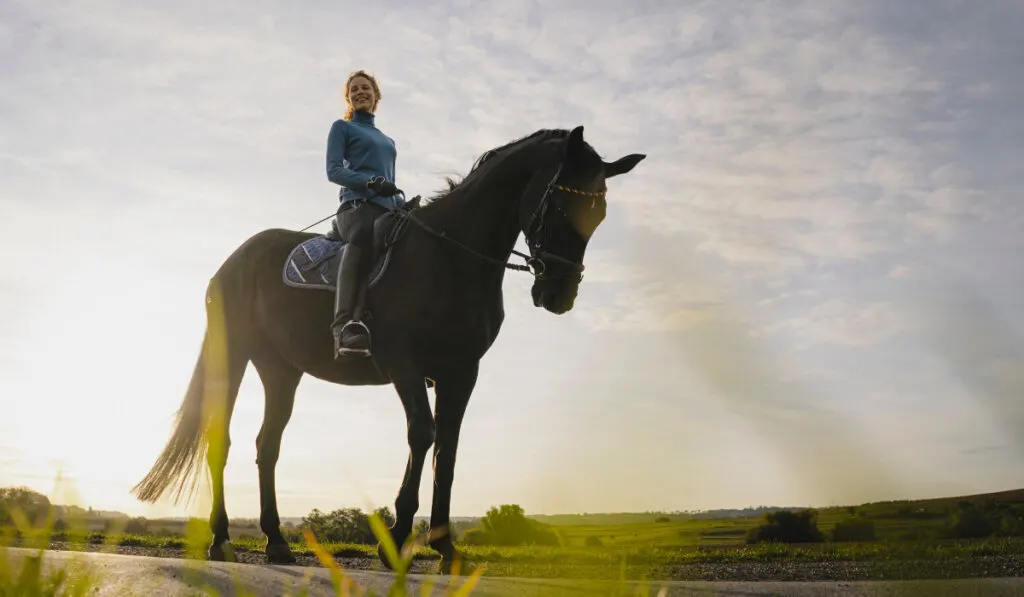
In this article, we delve into the topic of riding horses – roads, highways vs. street use. You’ll learn important safety tips and legal rules to help you ride your horse safely and responsibly in these places. (Source)
Table of Contents
Each state, county, and town has its own rules about riding a horse on the road. No federal laws stop you from taking your horse on city streets, but make sure you check local rules.
Most horse laws treat them as livestock, covering their care, slaughter rules, and accident liability. However, these laws mostly apply to horses used in equine activities or as loose herds. Horses on the road, whether ridden or driven, follow traffic laws and must share the road with cars.
Individual rules can vary from region to region with regard to exactly when and where you can ride, but for the most part – it’s legal to ride your horse on the road except where expressly forbidden.
Horse-drawn carriages and sleighs are considered “slow-moving vehicles,” and are also governed by traffic laws. However, there are some exceptions for carriages – usually regarding tourism. For example, you can usually drive your own horse and buggy down the road to the corner store, but you may need a specific commercial license if you want to pick up passengers.
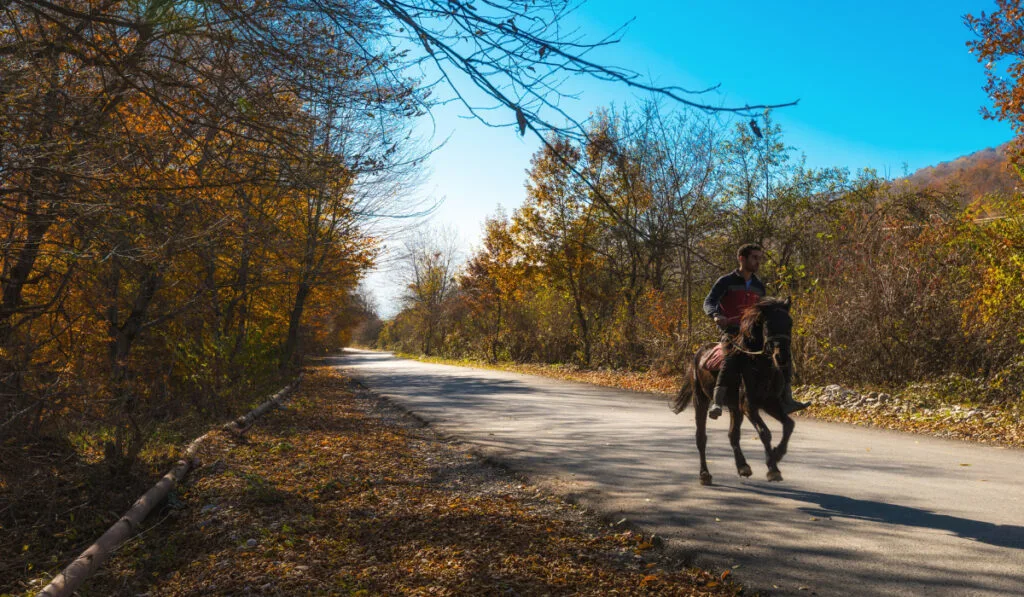
Riding a horse doesn’t require a license. But, for driving a buggy, leading a trail ride, or carrying passengers, you might need one. If you’re just planning to enjoy trail riding – even on road sections – you don’t need a license.
Many states have laws in place to protect horseback riders on roadways. Here’s an example from New Hampshire:
“Every person having control or charge of a vehicle shall, whenever upon any way and approaching any horse, drive, manage, and control such vehicle in such a manner as to exercise every reasonable precaution to prevent the frightening of such horse, and to insure the safety and protection of any person riding or driving the same.”
(source)
Generally, vehicles should give way to riders and avoid scaring horses. Sharing the road is a good idea to keep it safe.
Riders should follow traffic laws and signs. Highways, train paths, and many bridges are off-limits.. Use equestrian crossings wherever possible, and avoid busy intersections.
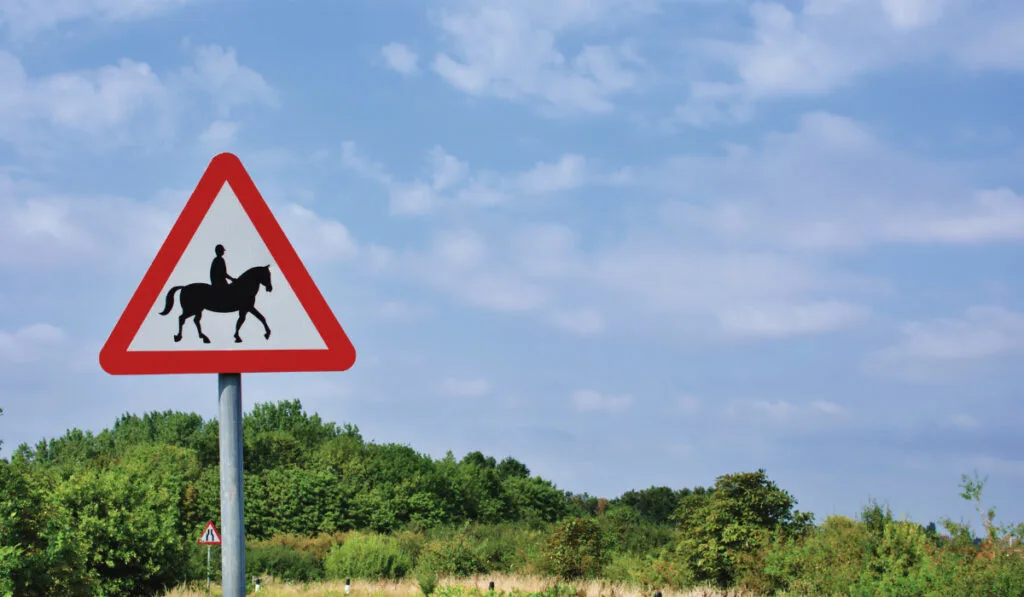
Most states specify that you should ride on the right-hand side of the road with the flow of traffic (except in Colorado, where you must ride on the left). Ride in a single-file line if you’re in a group, and stay as near to the shoulder as you can. (source)
While there are few laws expressly forbidding riding on a road, remember to pay attention to the specific rules of your area. Here are some examples of applicable traffic laws (although this is far from an exhaustive list) (source):
Most states don’t ban highway riding, but in order to be safe, follow road rules as highways often exclude horses.
Always follow signs when riding – it’s important for everyone’s safety. Use equestrian crossings when applicable, and avoid riding on areas designated for pedestrians only (such as sidewalks).
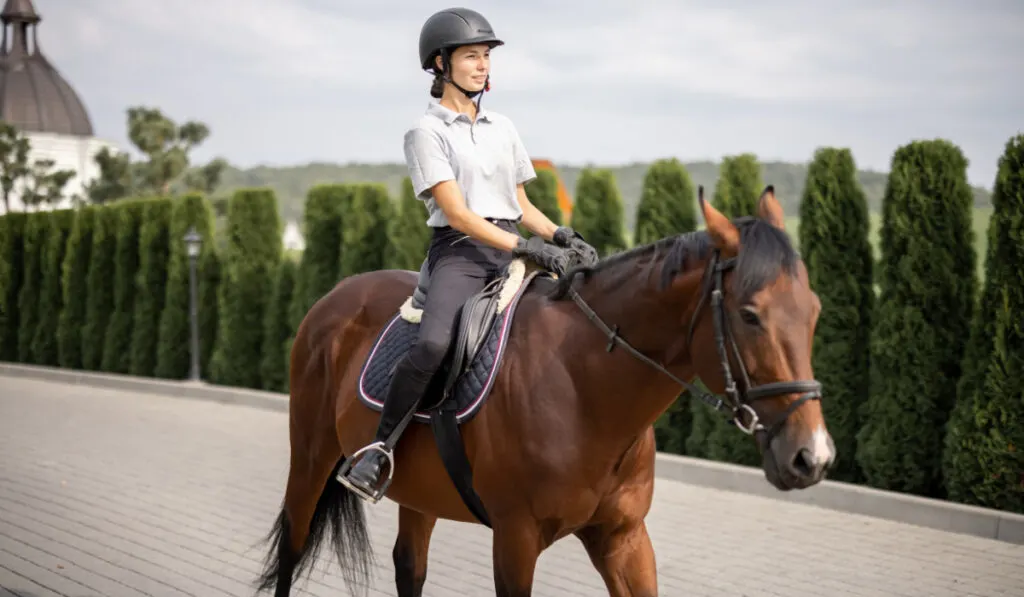
Even if you have a legal right to be on the road, always take safety precautions when sharing the road with motor vehicles. Here are some basic tips (source):
Learn more about good and safe riding equipment in our article on horse saddles!
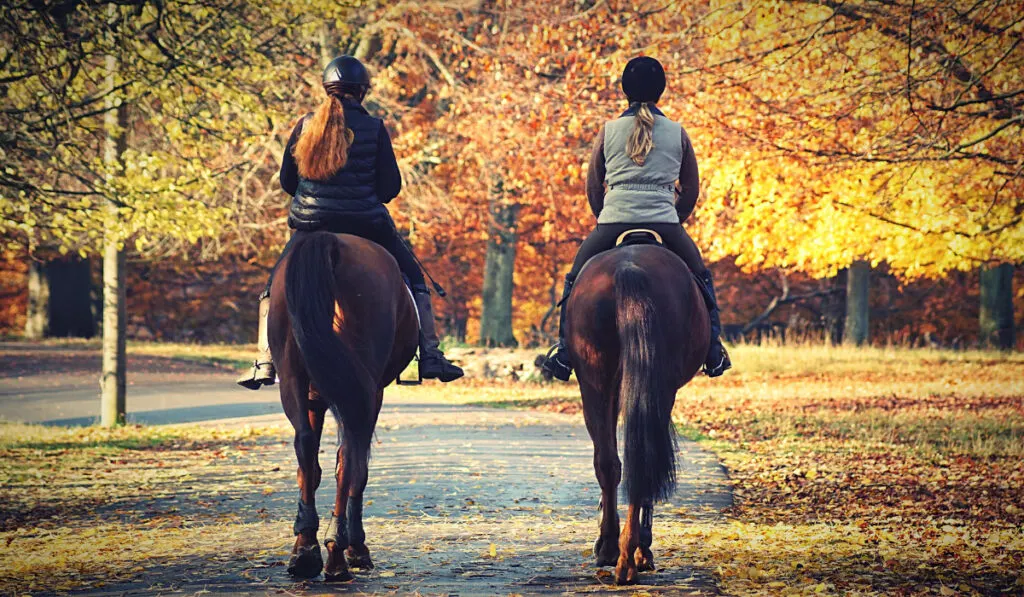
While your horse must obey traffic laws, you won’t get tickets for speeding or running red lights while riding legally. However, there are still consequences for riding your horse recklessly or breaking explicit traffic laws.
Learn about dangerous horse breeds, and their traits to avoid risks.
Most DUI and DWI laws apply to people operating a motor vehicle while under the influence, which may or may not apply to riding a horse.
In some states, people have been charged and convicted of driving under the influence or driving while intoxicated (including California, Texas, and Florida) while riding their horse drunk.
In some states, riding a horse after drinking may lead to charges like public intoxication, even if it’s not against traffic laws. (source)
In today’s tech-savvy society, the same laws would probably apply to texting or using the phone while riding as they do while driving (which can vary greatly from state to state).
Generally speaking – if it’s illegal for drivers to do it, then consider it illegal for equestrians on the road as well.
Even if you can’t be charged with a DUI/DWI, you should still avoid doing anything that could compromise the safety of you or your horse.
If an incident occurs, you could be liable for damage that happens to someone’s property or vehicle. You could also be charged with animal endangerment, public endangerment, or public intoxication if you’re caught riding your horse while under the influence. (source)
Yes, you can ride a horse on the road at night, but it’s crucial to follow safety regulations and ensure visibility, such as using reflective gear and lights, for both rider and horse.
While insurance requirements may vary by location, it’s generally a good idea to have liability insurance when horseback riding on the street to protect against potential accidents or injuries. Check your local regulations and consider consulting with an insurance provider for specific guidance.
The main difference between riding a horse in urban and rural areas lies in the environment and potential hazards. In urban areas, you’ll encounter traffic, pedestrians, and more regulations, so it’s essential to follow road laws.
In urban areas, local laws often limit or ban street horse riding for safety reasons. It’s essential for riders to be aware of and comply with these regulations when riding in urban environments.
For updated information on highway code changes for horse riding, you can check Enable Law.

Join our mailing list to receive the latest updates as well as get access to the FREE resource library!